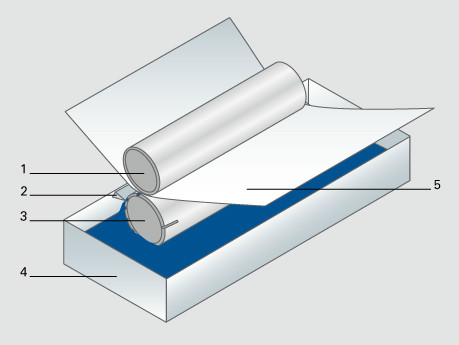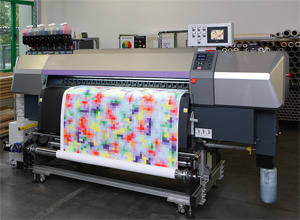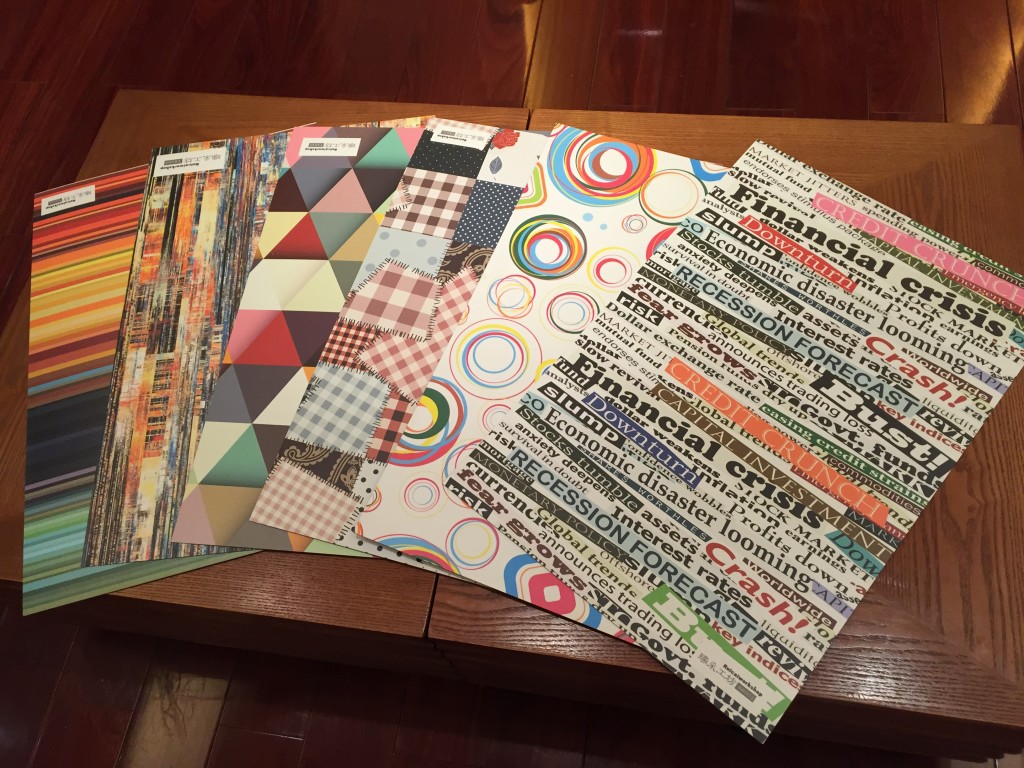One of the least understood things about decorative laminates is that the visuals you see – whether they’re abstracts, wood grains, stones, or fantasy designs – are created on specially engineered decor papers. These papers are then treated with performance resin systems specifically designed for the intended application, whether it’s HPL, thermally fused melamine.
Throughout the history of decorative laminates, decor papers have been printed on rotogravure presses using several stages of specially engraved cylinders, each carrying part of the design structure and color. This is the same technology used for fine-art prints and photography, known for its very high quality.
Rotogravure presses run at high production speeds, tended by skilled artisans who make sure each print stage is perfectly in register, and every roll of printed paper matches exactly the color and balance of the original design approved by the customer.
Rotogravure press(screen printing process)
1 Back pressure cylinder, 2 Doctor blade, 3 Printing cylinder, 4 Ink, 5 Printing substrate
Some of these decors have been the same for literally decades. Others use the same pattern or structure, but the colors are customized for different customers and markets.
Production rotogravure presses are the size of four train cars and cost several million dollars. Because production cylinders are very expensive to buy and engrave, new decor concepts have traditionally been developed on “lab” or “baby” presses, which are scaled-down machines that use the same inks and paper. If necessary, test prints can then be pressed into a facsimile of the intended carrier material. Several years ago, decor printers began experimenting with digital printing as a way to shorten the design development process, but differences in paper and ink limited color accuracy and the ability to create pressed samples.
Digital printed laminate designs
Most major laminate suppliers have always offered custom printed laminates. Logos, graphics, even murals were created by screen printing the decor papers before they were treated and pressed into laminates. This process is, of course, labor-intensive and slow, and photo-quality images were not possible.
As digital printing for decor paper proofs was coming online, suppliers began to explore using that technology to create full-size custom laminates. Among the many challenges: Printing speeds are very slow; most printers are nowhere near the width of a laminate sheet; inkjet heads were not compatible with the water-based, organic inks used by the top decor printers; and, inkjet printing on decor papers yielded inferior quality.
Quality first,Volume later
Currently the most famous laminate brands,including Real Color,12 color high resolution water-based ink is applied mostly,which have been engineered to be compatible with decor paper structures, as well as with the resin saturating that will be done by the company’s direct customers – the creators of laminates. They are also color-fast and stable over time – which, because of the durability of laminates, might mean decades.
We stick on water-based inks instead of adding any more solvent and UV inks for the possiblity of remaining of toxic substances.
However,recently ,the major difficulty for most digital print manufacturers is the printing speed.A multiple pass inkjet systems are commonly used which needs one printing head travels back and forth.While,a single-pass system printer with fixed heads across the width is under investigation,which would multiple printing speed more than 300 times or even more.
(adapted from kenn Busch)






Comments are closed.